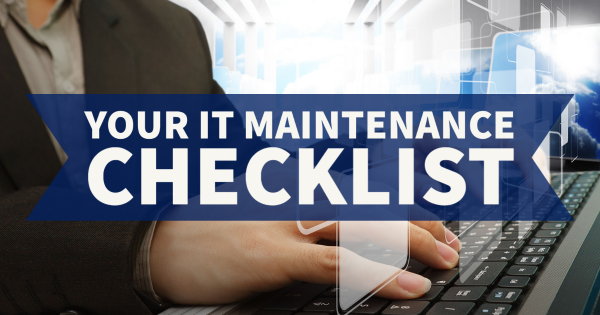Your IT Maintenance Checklist

Ensuring business continuity starts with making sure you are taking care of your IT. Businesses, all businesses, are highly dependent on their IT. This year the global budget for business IT is expected to be about $3.92 trillion. Protecting your IT investment starts with a good IT maintenance plan. Every functioning part of your system, from C15 power cords to your mainframe, needs care.
Make a List
One of the most problematic things about getting IT maintenance done, is that it is often forgotten. Life gets in the way, and if you do not have a list and a set schedule, IT maintenance often falls to the wayside.
Here is a sample IT Maintenance Checklist. You can use this monthly or quarterly, depending on scale and risk tolerance.
Hardware Checks
Inspect power cords for wear, damage, and secure connection
Verify UPS (Uninterruptible Power Supply) status and battery health
Check server/workstation fans, cooling systems, and dust filters
Ensure racks and cables are organized and labeled
Test backup power systems and surge protectors
System Health
Reboot servers and workstations (as scheduled)
Check disk space and storage health (SMART data, RAID status)
Run OS and firmware updates on all devices
Monitor CPU, RAM, and network usage for anomalies
Validate endpoint security software (AV, EDR) is up to date
Security Checks
Review failed login attempts and audit logs
Rotate passwords or review password policy
Patch all known vulnerabilities (OS, apps, plugins)
Test firewall and endpoint rules
Verify user access roles are current
Backup & Recovery
Confirm automated backups ran successfully
Perform a test restore of critical data
Check cloud backup quotas and retention policies
Validate physical backup drives (if used)
Network & Connectivity
Inspect switches, routers, and wireless access points
Check cabling integrity (especially at endpoints)
Update firmware on network hardware
Test internet redundancy / failover connections
Review network performance logs
Software / Application Maintenance
Check for software updates and patches
Verify license expirations or renewals
Review application logs for errors
Archive or clean up obsolete data or inactive accounts
User Support / Housekeeping
Deactivate accounts for former employees
Verify MFA enrollment for all users
Survey users for pain points or slow systems
Schedule or deliver basic security awareness training
Documentation
Update network diagrams and IP documentation
Refresh system passwords stored securely
Document recent changes, outages, or incidents
Review and update disaster recovery plan
